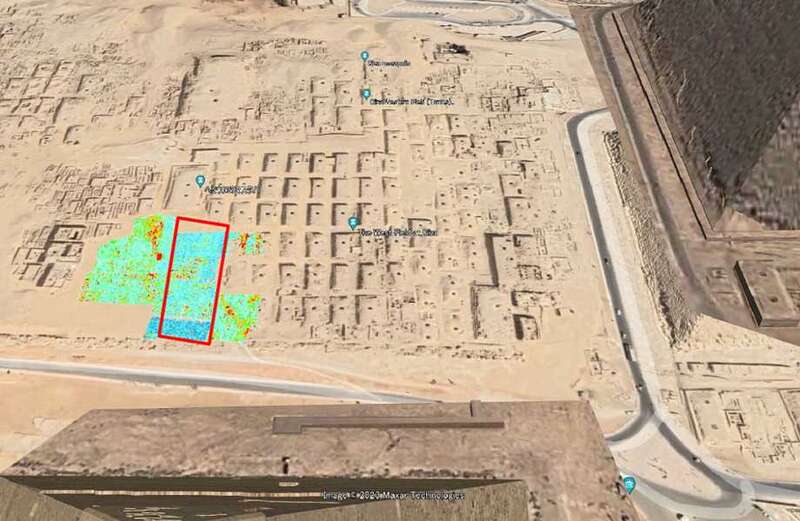ARCHEOLOGISTS are investigating a large, angular space discovered underground in an unexplored area of Egypt's most famous pyramids.
The Giza pyramid complex is the largest in the world, consisting of several ancient structures including the Great Pyramid, the Pyramid of Khafre, the Pyramid of Menkaure, and several smaller sites.




Dating back to at least 4,500 years ago, scientists believe that the Giza pyramids were built as a tribute to the gods of the time and mostly used for ceremonial purposes.
As an archeological haven for experts on ancient Egyptian life, several artifacts, tombs, burial chambers and cemeteries have been excavated in the area over the last two centuries.
But new and amazing discoveries still occur regularly at the site.
 Baffled workers find extraordinary ancient shipwreck in quarry 300mtrs from sea
Baffled workers find extraordinary ancient shipwreck in quarry 300mtrs from sea
A collaborative team of Japanese and Egyptian scientists recently used new imaging technology to search for underground structures in Giza's western cemetery — and were stunned by what they found.
Using a technique called electrical resistivity tomography (ERT), the scientists were able to get a 3D image of the zone in question and identify an L-shaped "anomaly" measuring at least 33 feet long, according to a paper published May 5 in the journal Archaeological Prospection.
The structure "seems to have been filled with sand, which means it was backfilled after it was constructed," the team wrote in the study.
"This anomaly extends to 3.5–10 m in depth and over a horizontal area of 10 m by 10 m," they explained.
Understanding the composition and dimensions of the anomaly is important for predicting whether it is man-made or just a naturally occurring phenomenon.
"We believe that the continuity of the shallow structure and the deep large structure is important," scientists said.
"From the survey results, we cannot determine the material causing the anomaly, but it may be a large subsurface archaeological structure."
MORE INVESTIGATION NEEDED
The remote sensing work used in this study was carried out between 2021 and 2023 by a joint team of scientists from Higashi Nippon International and Tohoku Universities in Japan, and Egypt's National Research Institute of Astronomy and Geophysics.
Determining the origin or any further details about the L-shaped structure requires greater investigation, first author Motoyuki Sato of the Center for Northeast Asian Studies at Tohoku University told Live Science.
And more studies of the area are already underway, he said.
 Huge Viking hall discovered in 'biggest find' in more than a decade
Huge Viking hall discovered in 'biggest find' in more than a decade
As to the question of whether the anomaly is natural or not, Sato had little doubt.
"The shape is too sharp" for it to be an environmental occurrence, he said.


NEW HORIZONS IN RESEARCH
Egyptologists were fascinated by the find too.
The newly found underground passage stands out from other studies because there is no evidence of a standing structure above ground.
Typically, most underground chambers in the Giza complex have been found underneath other ruins, Peter Der Manuelian, a professor of Egyptology at Harvard University who was not involved in the study, told Live Science.
"It's an interesting area, one that has avoided exploration due to the absence of superstructures," he said.
He said there are other L-shaped structures at Giza, now known to be offering chapels, but they are usually aboveground.
"I'm not sure just what this anomaly represents yet, but it is certainly worthy of further exploration," he added.



































